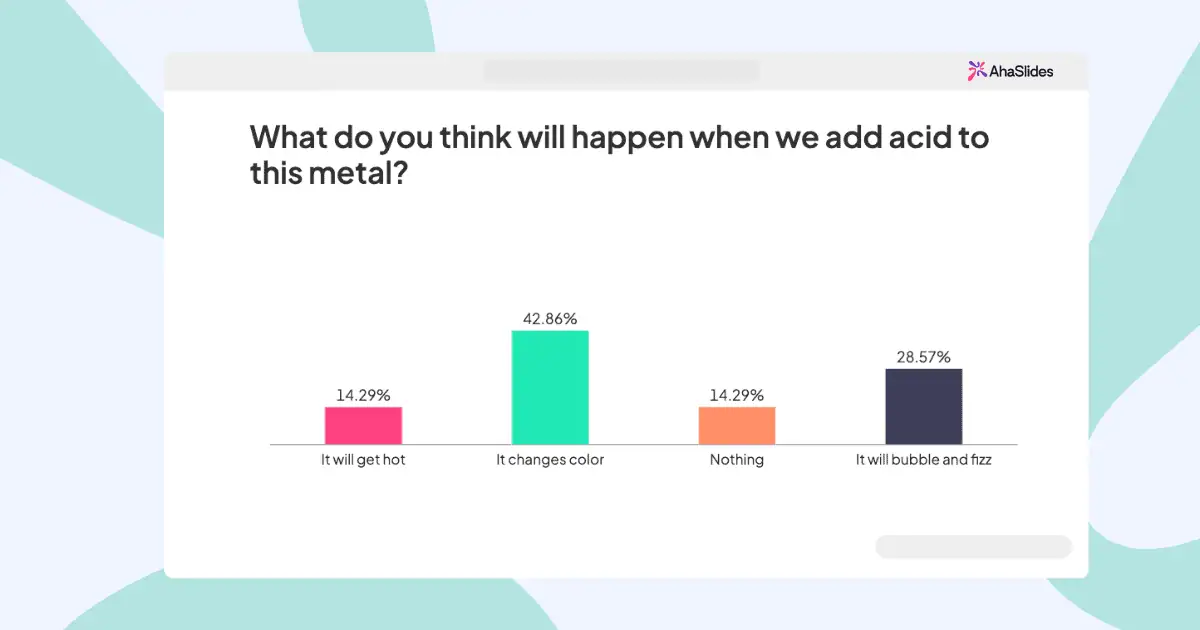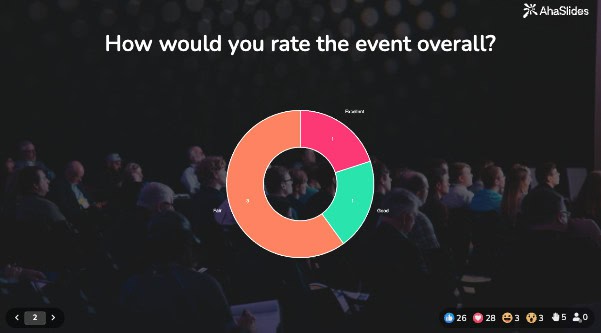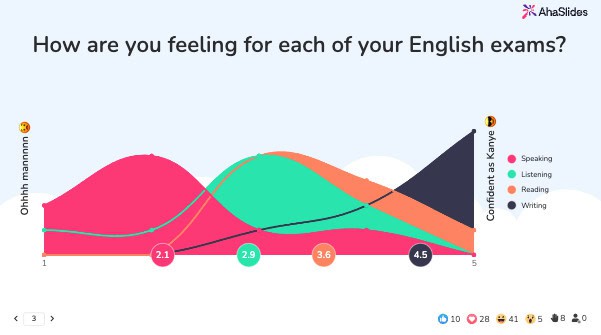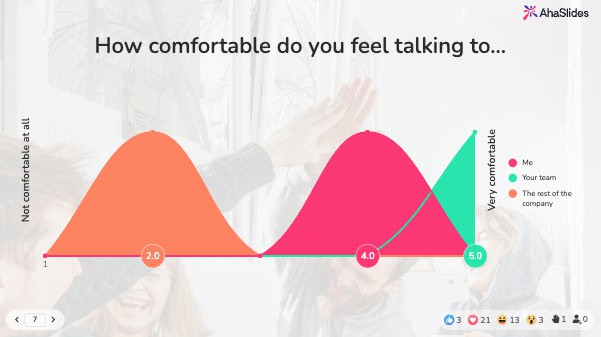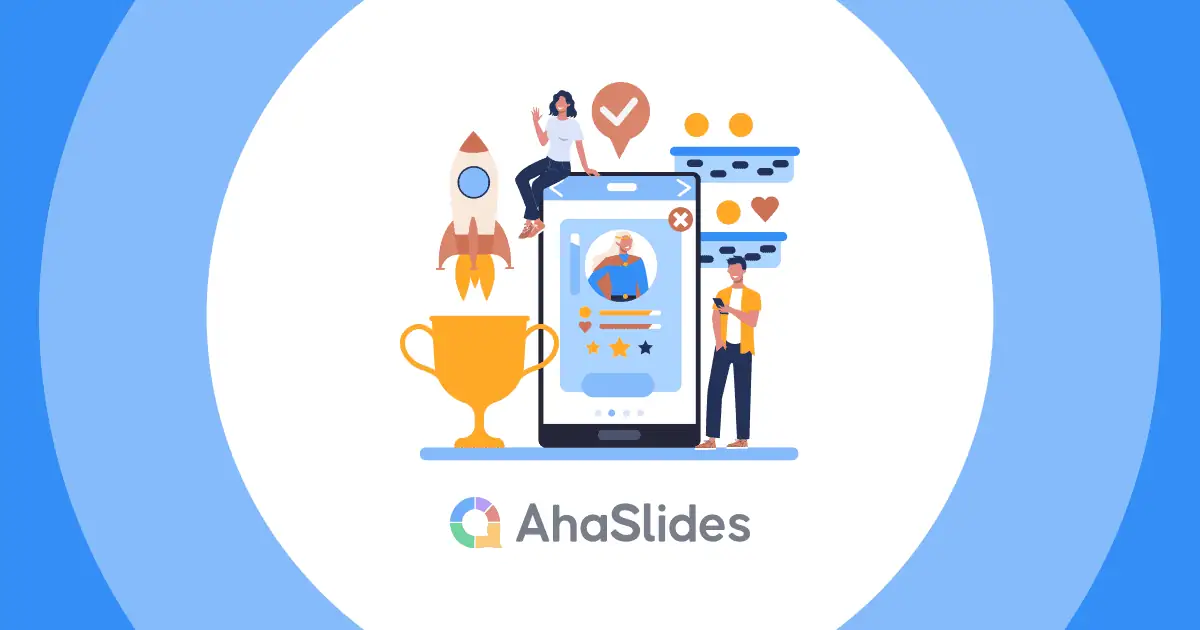Multiple choice questions (MCQs) are structured query formats that present respondents with a stem (question or statement) followed by a set of predetermined answer options. Unlike open-ended questions, MCQs constrain responses to specific choices, making them ideal for standardised data collection, assessment, and research purposes. Wondering which type of question is the best fit for your purpose? Join us to explore 10 types of multiple choice questions, along with examples below.
Table of Contents
What Are Multiple Choice Questions?
In its simplest form, a multiple-choice question is a question that is presented with a list of potential answers. Therefore, the respondent will have the right to answer one or more options (if allowed).
Because of the quick, intuitive as well as easy-to-analyse information/data of multiple-choice questions, they are used a lot in feedback surveys about business services, customer experience, event experience, knowledge checks, etc.
For example, what do you think about the restaurant's special dish today?
- A. Very delicious
- B. Not bad
- C. Also normal
- D. Not to my taste
Multiple-choice questions are closed questions because the respondents' choices should be limited to make it easier for respondents to choose and motivate them to want to respond more.
At its fundamental level, a multiple choice question consists of:
- A clear, concise question or statement that defines what you're measuring
- Multiple answer options (typically 2-7 choices) that include both correct and incorrect responses
- Response format that allows single or multiple selections based on your objectives
Historical Context and Evolution
Multiple choice questions emerged in the early 20th century as educational assessment tools, pioneered by Frederick J. Kelly in 1914. Originally designed for efficient grading of large-scale examinations, MCQs have evolved far beyond academic testing to become cornerstone tools in:
- Market research and consumer behaviour analysis
- Employee feedback and organisational surveys
- Medical diagnosis and clinical assessments
- Political polling and public opinion research
- Product development and user experience testing
Cognitive Levels in MCQ Design
Multiple choice questions can assess different levels of thinking, based on Bloom's Taxonomy:
Knowledge Level
Testing recall of facts, terms, and basic concepts. Example: "What is the capital of France?"
Comprehension Level
Evaluating understanding of information and ability to interpret data. Example: "Based on the graph shown, which quarter had the highest sales growth?"
Application Level
Assessing ability to use learned information in new situations. Example: "Given a 20% increase in production costs, which pricing strategy would maintain profitability?"
Analysis Level
Testing ability to break down information and understand relationships. Example: "Which factor most likely contributed to the decline in customer satisfaction scores?"
Synthesis Level
Evaluating ability to combine elements to create new understanding. Example: "Which combination of features would best address the identified user needs?"
Evaluation Level
Testing ability to judge value and make decisions based on criteria. Example: "Which proposal best balances cost-effectiveness with environmental sustainability?"
10 Types of Multiple-Choice Questions + Examples
Modern MCQ design encompasses numerous formats, each optimised for specific research objectives and respondent experiences.
1. Single-Select Questions
- Purpose: Identify one primary preference, opinion, or correct answer
- Best for: Demographic data, primary preferences, factual knowledge
- Optimal options: 3-5 choices
Example: What is your primary source of news and current events?
- Social media platforms
- Traditional television news
- Online news websites
- Print newspapers
- Podcasts and audio news
Best practices:
- Ensure options are mutually exclusive
- Order options logically or randomly to prevent bias
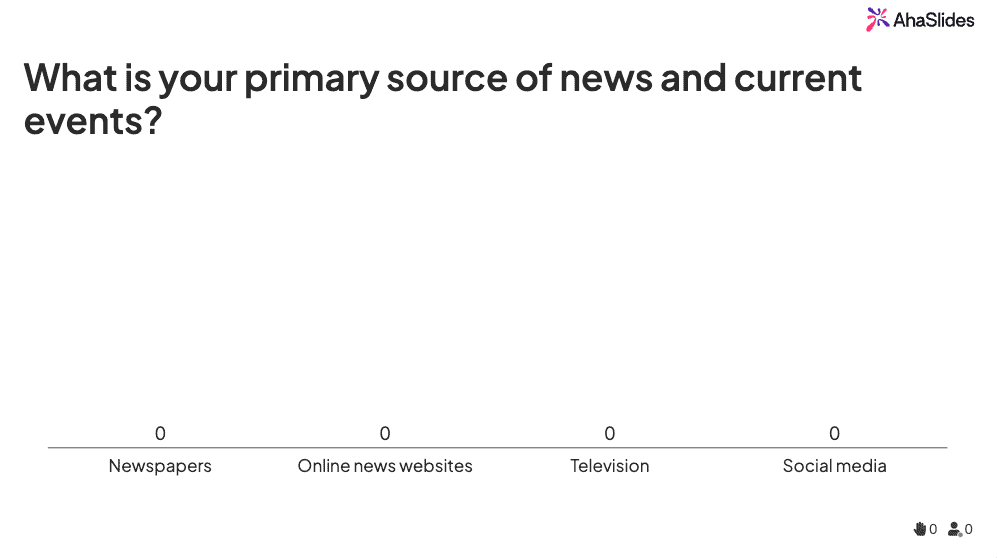
2. Likert Scale Questions
- Purpose: Measure attitudes, opinions, and satisfaction levels
- Best for: Satisfaction surveys, opinion research, psychological assessments
- Scale options: 3, 5, 7, or 10-point scales
Example: How satisfied are you with our customer service?
- Extremely satisfied
- Very satisfied
- Moderately satisfied
- Slightly satisfied
- Not at all satisfied
Scale design considerations:
- Odd scales (5, 7-point) allow neutral responses
- Even scales (4, 6-point) force respondents to lean positive or negative
- Semantic anchors should be clear and proportionally spaced
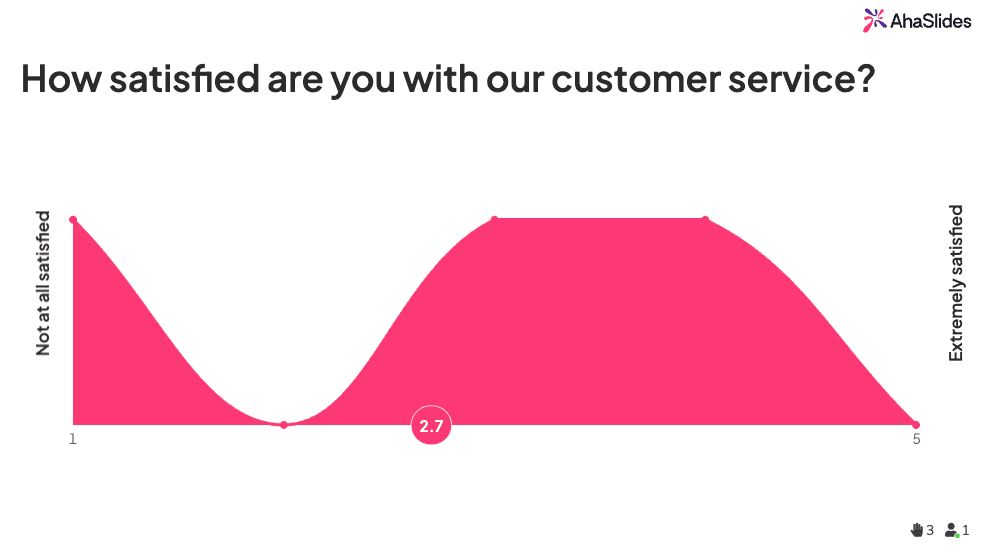
3. Multi-Select Questions
- Purpose: Capture multiple relevant responses or behaviours
- Best for: Behaviour tracking, feature preferences, demographic characteristics
- Considerations: Can lead to analysis complexity
Example: Which social media platforms do you use regularly? (Select all that apply)
- Twitter/X
- TikTok
- YouTube
- Snapchat
- Other (please specify)
Best practices:
- Clearly indicate that multiple selections are allowed
- Consider the cognitive burden of too many options
- Analyse response patterns, not just individual selections
4. Yes/No Questions
- Purpose: Binary decision-making and clear preference identification
- Best for: Screening questions, simple preferences, qualification criteria
- Advantages: High completion rates, clear data interpretation
Example: Would you recommend our product to a friend or colleague?
- Yes
- No
Enhancement strategies:
- Follow up with "Why?" for qualitative insights
- Consider adding "Not sure" for neutral responses
- Use branching logic for follow-up questions
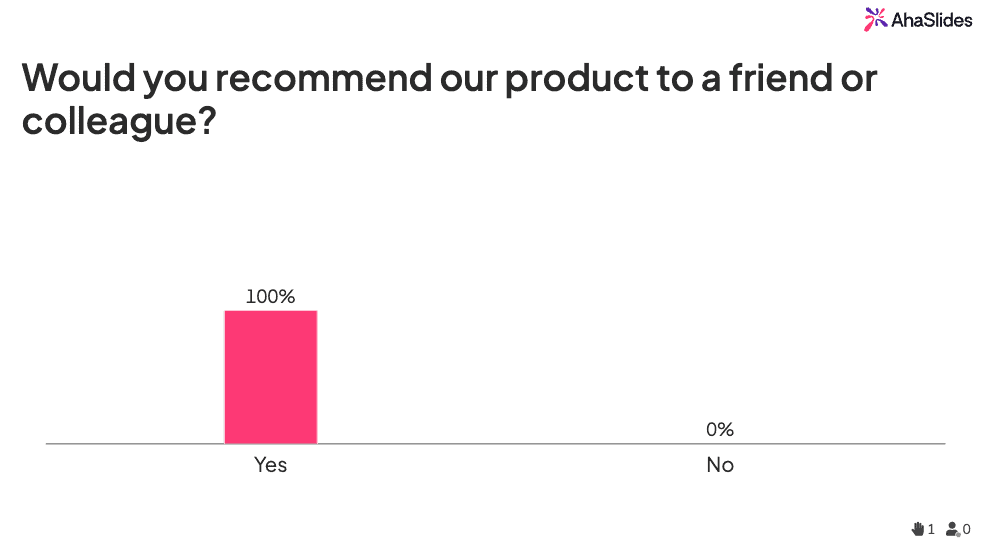
6. Rating Scale Questions
- Purpose: Quantify experiences, performance, or quality assessments
- Best for: Product reviews, service evaluation, performance measurement
- Visual options: Stars, numbers, sliders, or descriptive scales
Example: Rate the quality of our mobile app on a scale of 1-10: 1 (Poor) --- 5 (Average) --- 10 (Excellent)
Design tips:
- Use consistent scale directions (1=low, 10=high)
- Provide clear anchor descriptions
- Consider cultural differences in rating interpretations
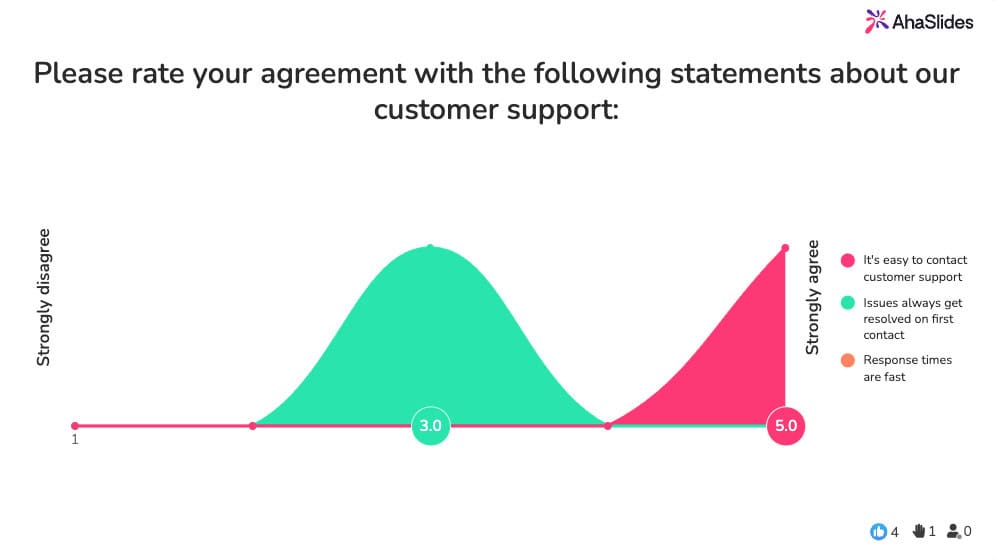
7. Ranking Questions
- Purpose: Understand priority order and relative importance
- Best for: Feature prioritisation, preference ordering, resource allocation
- Limitations: Cognitive complexity increases with options
Example: Rank the following features in order of importance (1=most important, 5=least important)
- Price
- Quality
- Customer service
- Delivery speed
- Product variety
Optimisation strategies:
- Consider forced ranking vs. partial ranking options
- Limit to 5-7 options for cognitive manageability
- Provide clear ranking instructions
8. Matrix/Grid Questions
- Purpose: Efficiently collect ratings across multiple items
- Best for: Multi-attribute evaluation, comparative assessment, survey efficiency
- Risks: Respondent fatigue, satisficing behaviour
Example: Rate your satisfaction with each aspect of our service
| Service aspect | Excellent | Good | Average | Poor | Very poor |
|---|---|---|---|---|---|
| Speed of service | ○ | ○ | ○ | ○ | ○ |
| Staff friendliness | ○ | ○ | ○ | ○ | ○ |
| Problem resolution | ○ | ○ | ○ | ○ | ○ |
| Value for money | ○ | ○ | ○ | ○ | ○ |
Best practices:
- Keep matrix tables under 7x7 (items x scale points)
- Use consistent scale directions
- Consider randomising item order to prevent bias
9. Image-Based Questions
- Purpose: Visual preference testing and brand recognition
- Best for: Product selection, design testing, visual appeal assessment
- Advantages: Higher engagement, cross-cultural applicability
Example: Which website design do you find most appealing? [Image A] [Image B] [Image C] [Image D]
Implementation considerations:
- Provide alt-text for accessibility
- Test across different devices and screen sizes
10. True/False Questions
- Purpose: Knowledge testing and belief assessment
- Best for: Educational assessment, fact verification, opinion polling
- Considerations: 50% chance of correct guessing
Example: Customer satisfaction surveys should be sent within 24 hours of purchase.
- True
- False
Improvement techniques:
- Add "I don't know" option to reduce guessing
- Focus on clearly true or false statements
- Avoid absolutes like "always" or "never"
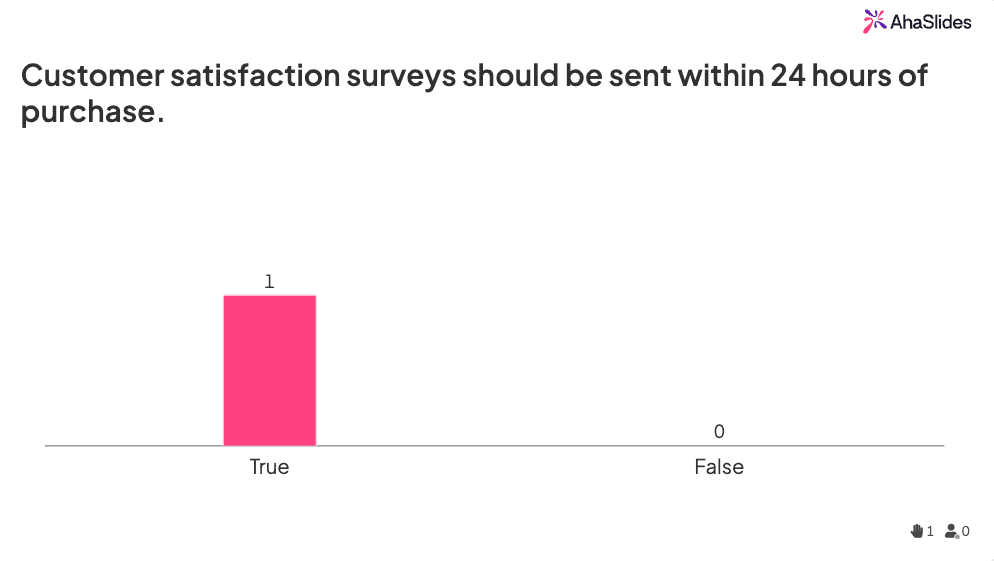
Bonus: Simple MCQs Templates
Best Practices for Creating Effective MCQs
Creating high-quality multiple choice questions requires systematic attention to design principles, testing procedures, and continuous improvement based on data and feedback.
Writing Clear and Effective Stems
Precision and clarity
- Use specific, unambiguous language that leaves no room for misinterpretation
- Focus on a single concept or idea per question
- Avoid unnecessary words that don't contribute to meaning
- Write at an appropriate reading level for your target audience
Complete and independent stems
- Ensure the stem can be understood without reading the options
- Include all necessary context and background information
- Avoid stems that require specific option knowledge to understand
- Make the stem a complete thought or clear question
Example comparison:
Poor stem: "Marketing is:" Improved Stem: "Which definition best describes digital marketing?"
Poor stem: "The thing that helps businesses most:" Improved stem: "Which factor contributes most significantly to small business success in the first year?"
Developing High-Quality Options
Homogeneous structure
- Maintain consistent grammatical structure across all options
- Use parallel phrasing and similar complexity levels
- Ensure all options complete the stem appropriately
- Avoid mixing different types of responses (facts, opinions, examples)
Appropriate length and detail
- Keep options roughly similar in length to avoid providing cues
- Include sufficient detail for clarity without overwhelming
- Avoid options that are too brief to be meaningful
- Balance brevity with necessary information
Logical organisation
- Arrange options in logical order (alphabetical, numerical, chronological)
- Randomise when no natural order exists
- Avoid patterns that could provide unintended cues
- Consider the visual impact of the option layout
Creating Effective Distractors
Plausibility and believability
- Design distractors that could reasonably be correct to someone with partial knowledge
- Base incorrect options on common misconceptions or errors
- Avoid obviously wrong or ridiculous options
- Test distractors with target audience members
Educational value
- Use distractors that reveal specific knowledge gaps
- Include near-miss options that test fine distinctions
- Create options that address different aspects of the topic
- Avoid purely random or unrelated distractors
Avoiding common pitfalls
- Avoid grammatical cues that reveal the correct answer
- Don't use "all of the above" or "none of the above" unless strategically necessary
- Avoid absolute terms like "always," "never," "only" that make options obviously wrong
- Don't include two options that mean essentially the same thing
How to Create Simple but Effective Multiple Choice Questions
Multiple choice polls are a simple way to learn about the audience, gather their thoughts, and express them in a meaningful visualisation. Once you set up a multiple-choice poll on AhaSlides, participants can vote through their devices and the results are updated in real-time.
It’s as easy as that!
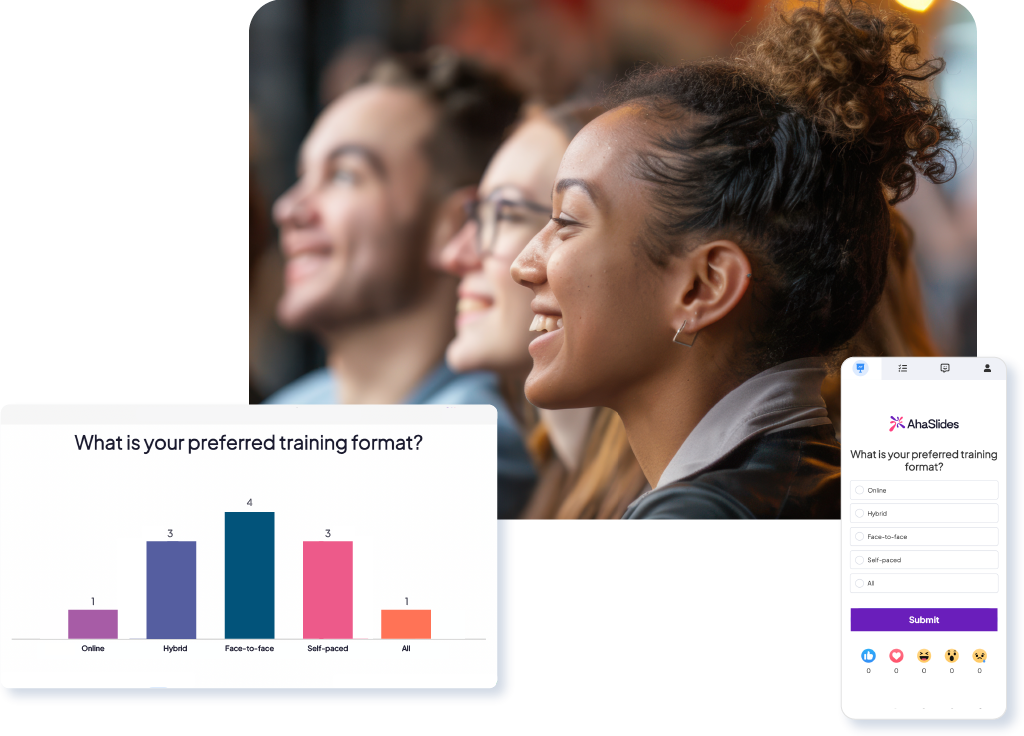
At AhaSlides, we have many ways to spruce up your presentation and get your audience involved and interacting. From Q&A slides to word clouds and of course, the ability to poll your audience. There are plenty of possibilities awaiting you.
